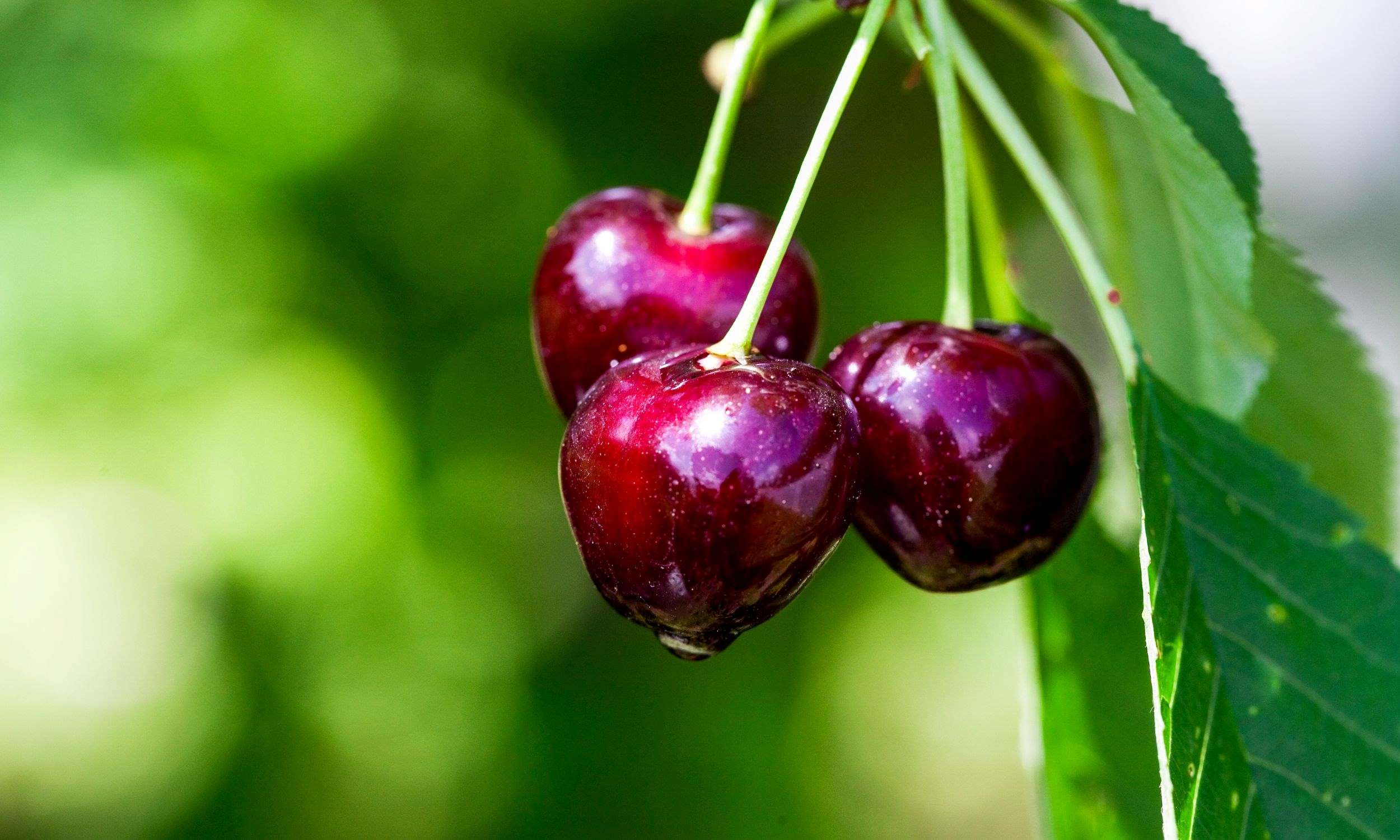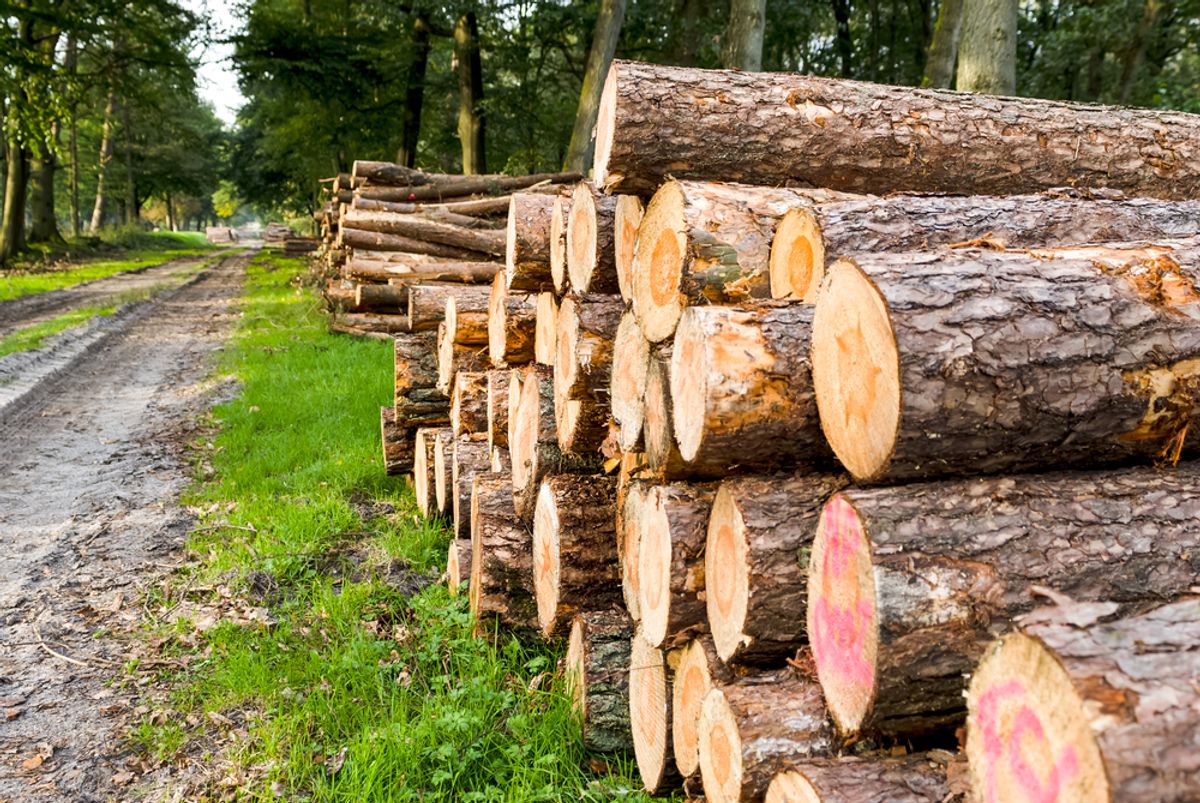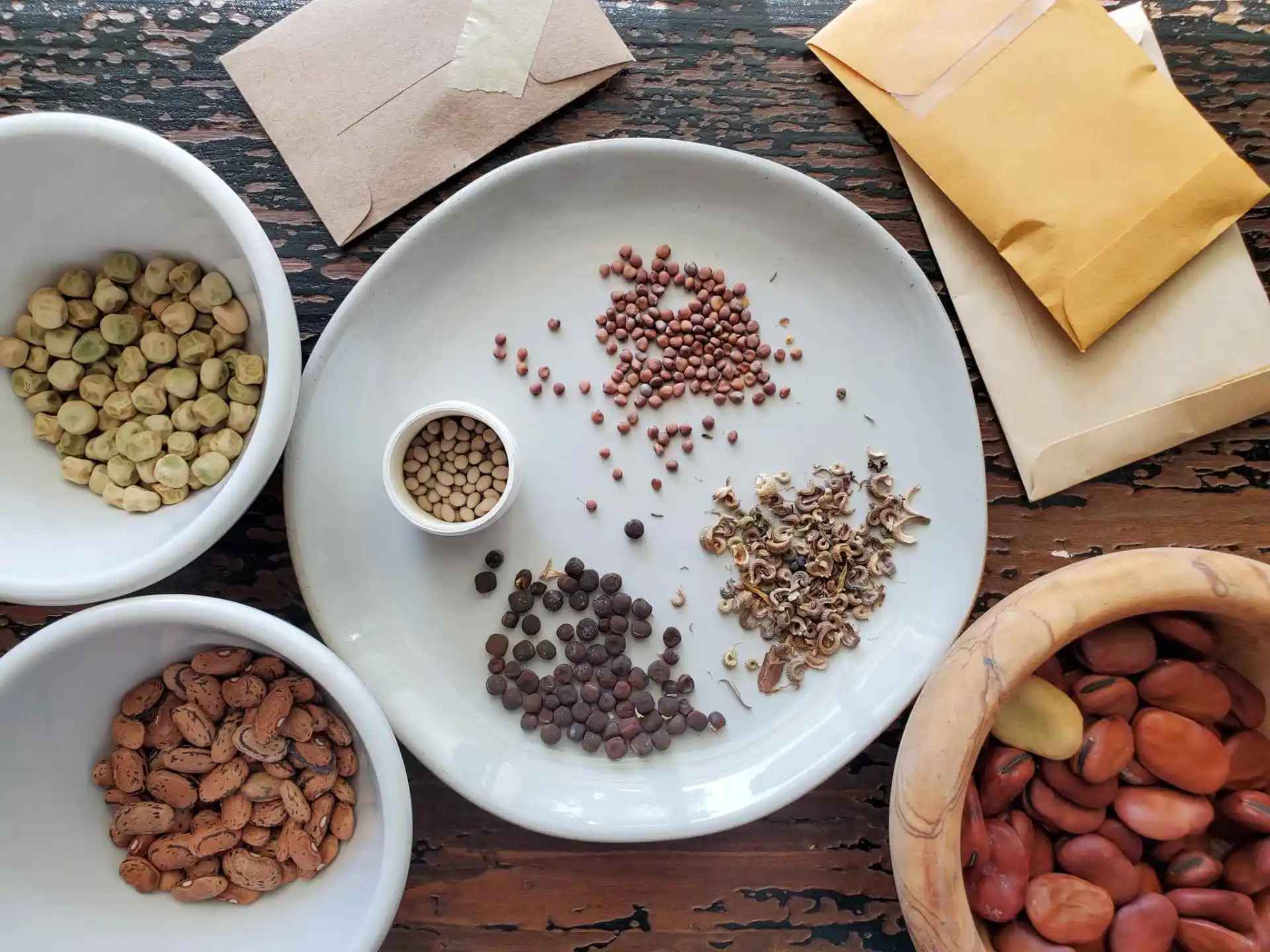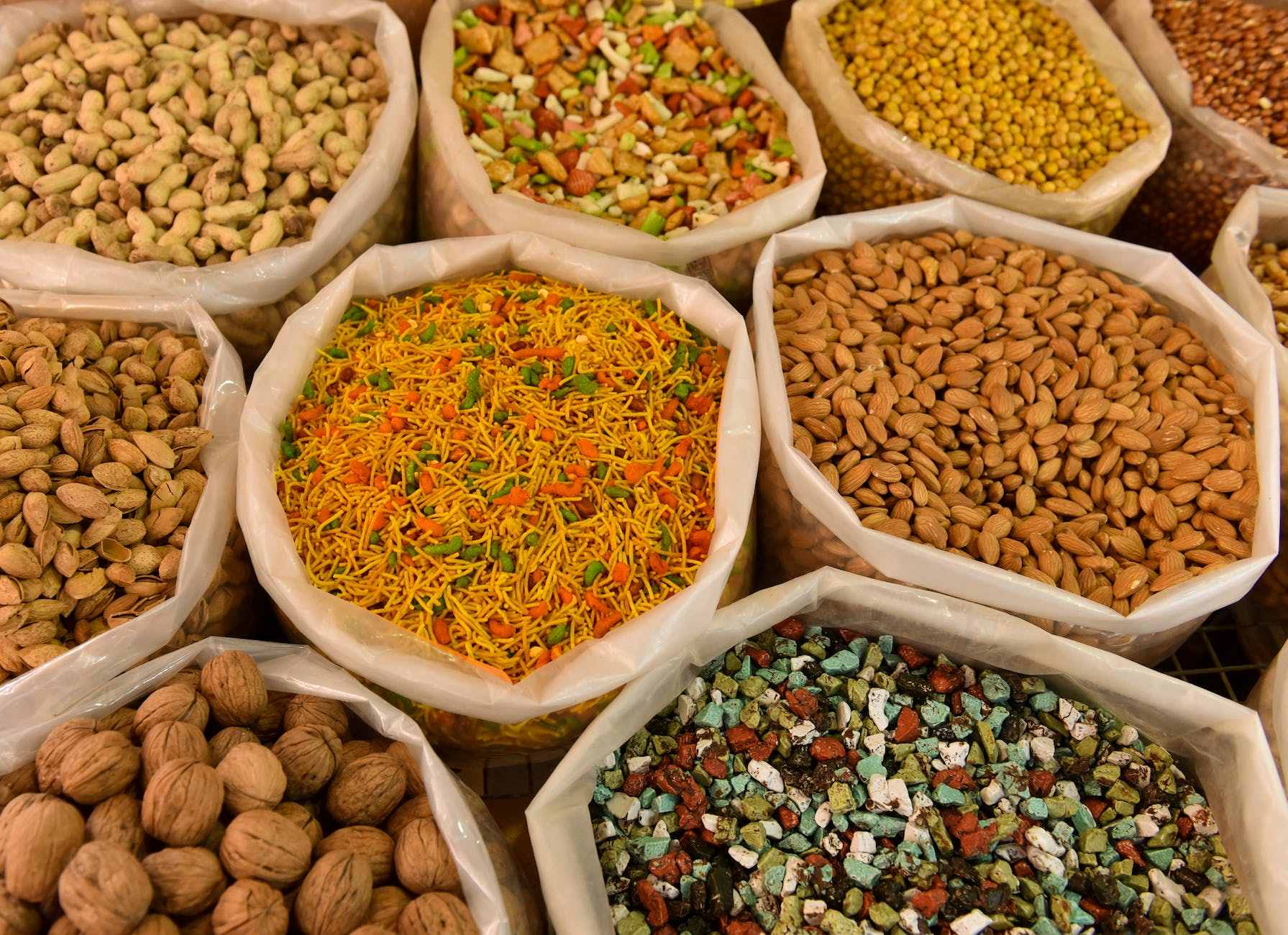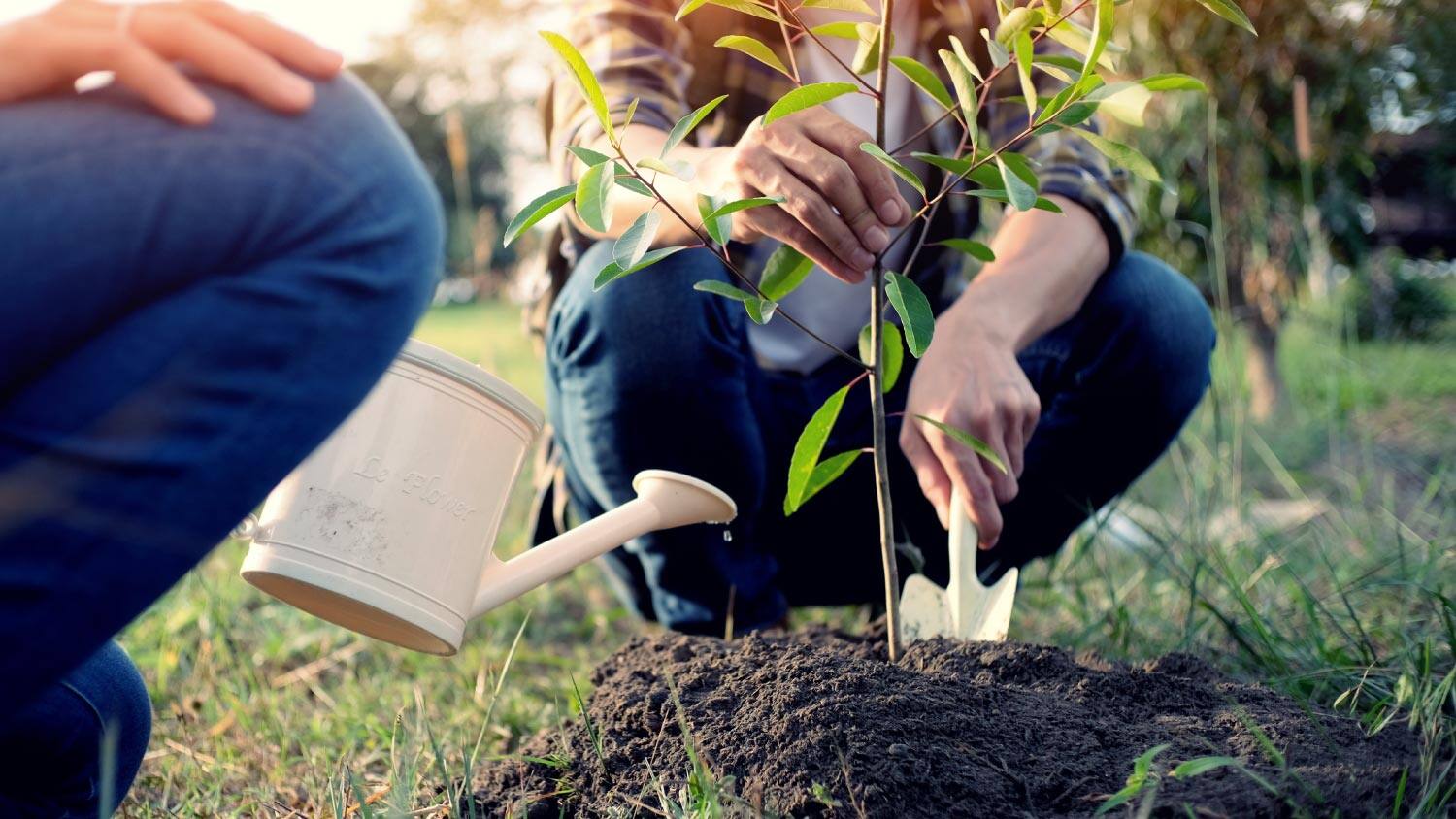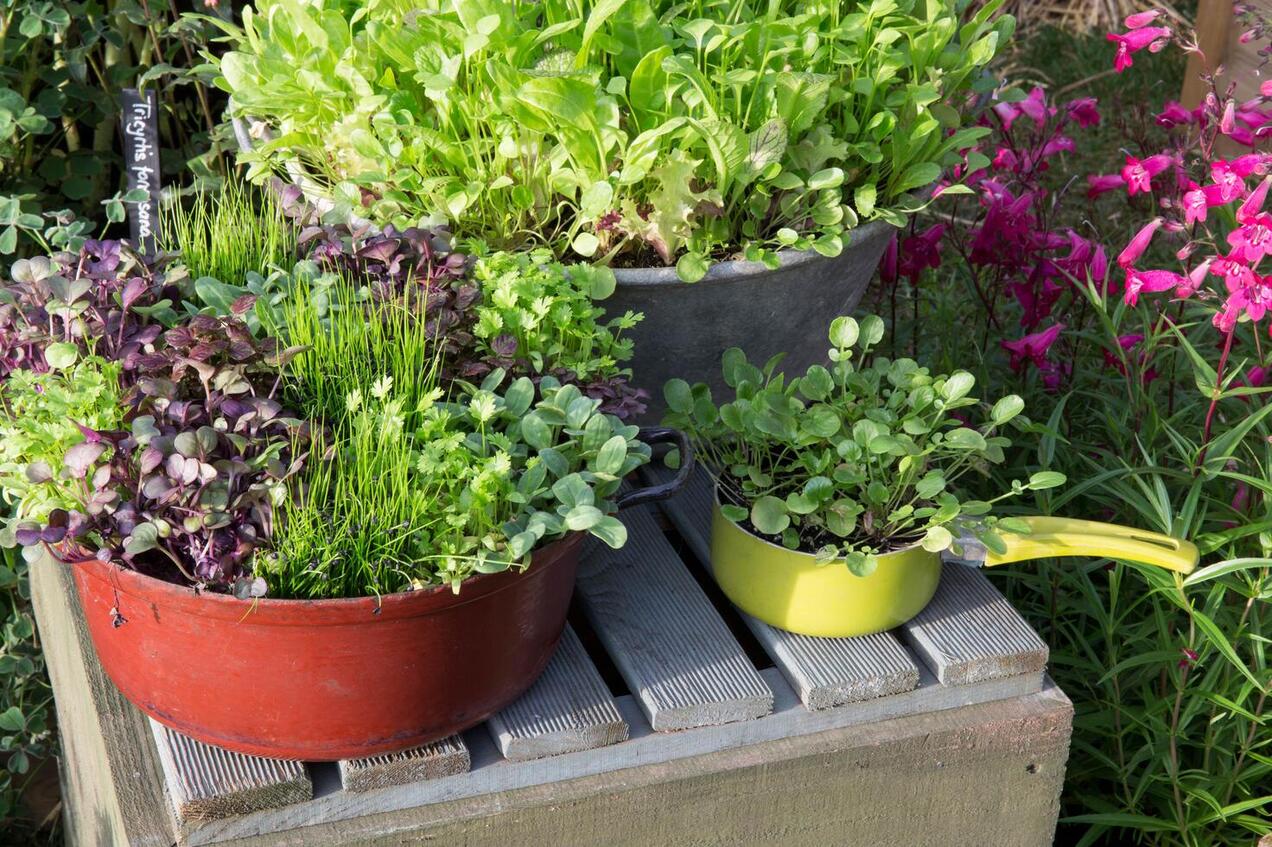Home>Types of Gardening>Ornamental Gardening>How Do Plants Trees Or Shrubs Make Seeds?
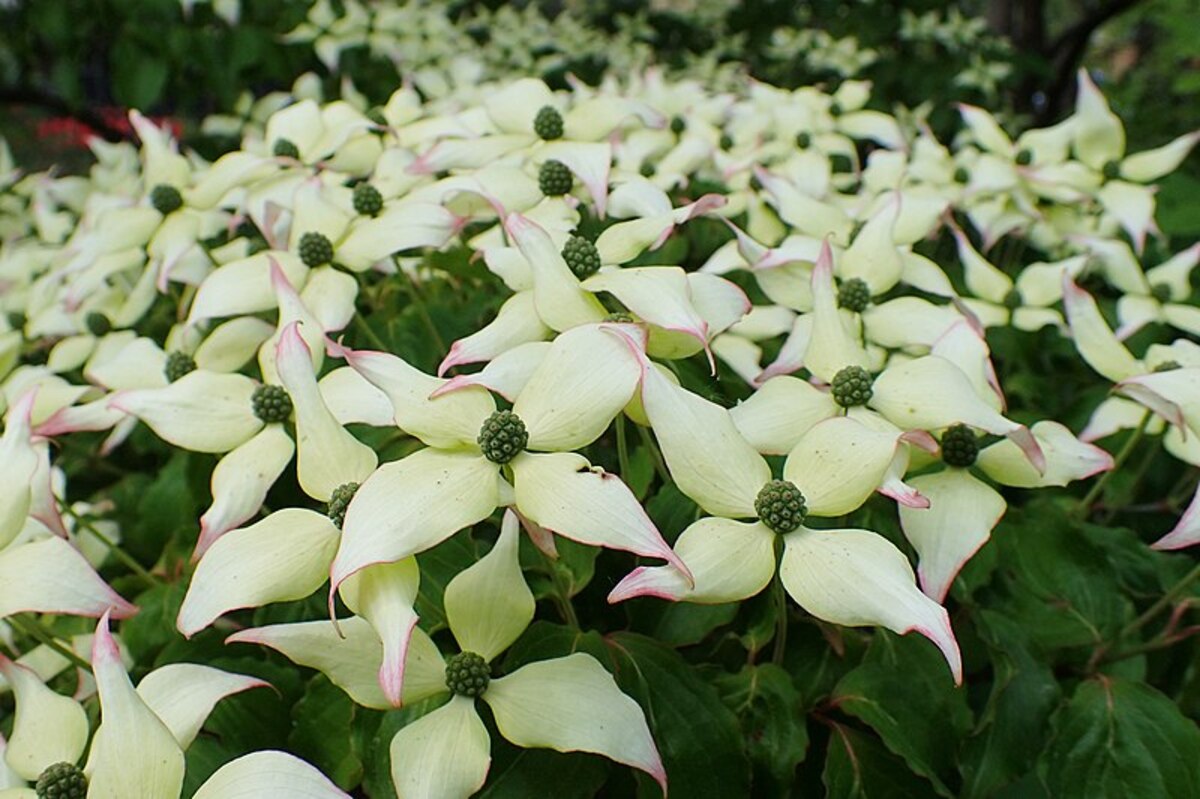

Ornamental Gardening
How Do Plants Trees Or Shrubs Make Seeds?
Modified: February 3, 2024
Discover the fascinating process of seed production in ornamental gardening, as plants, trees, and shrubs create new life through the production of seeds.
(Many of the links in this article redirect to a specific reviewed product. Your purchase of these products through affiliate links helps to generate commission for Chicagolandgardening.com, at no extra cost. Learn more)
Table of Contents
Introduction
Welcome to the world of ornamental gardening, where beauty meets nature! Ornamental gardening is a specialized field that focuses on the cultivation and care of plants, trees, and shrubs for aesthetic purposes. Whether you have a small balcony garden or a sprawling landscape, ornamental gardening allows you to create a stunning outdoor space that showcases your personal style and enhances the natural beauty of your surroundings.
Ornamental plants, trees, and shrubs not only provide visual appeal but also contribute to the overall health and well-being of the environment. They offer shade, produce oxygen, and attract beneficial insects and birds, making them an essential element in creating a balanced ecosystem. Understanding how these ornamental plants reproduce and produce seeds is crucial for any gardener looking to establish and maintain a flourishing garden.
In this article, we will delve into the fascinating process of seed production in plants, exploring the reproductive structures, pollination, fertilization, seed maturation, and the various mechanisms involved in seed dispersal. We will also discuss the environmental factors that affect seed production and highlight the importance of sustainability in ornamental gardening.
Whether you are an experienced gardener or just starting your journey in ornamental gardening, this article will provide you with valuable insights into the intriguing world of seed production in plants. So, grab your gardening tools and let’s embark on a journey to uncover the secrets behind how plants, trees, and shrubs make seeds!
Seed Production in Plants
Seed production is a fundamental process in the life cycle of all plants, including ornamental plants, trees, and shrubs. It is a complex series of events that ensures the survival and propagation of plant species. Seeds serve as a means of dispersal and provide a protective covering for the embryonic plant, allowing it to withstand harsh conditions until it can germinate and grow into a mature plant.
The process of seed production begins with the development of reproductive structures in plants. These structures include flowers, cones, or inflorescences, which house the male and female reproductive organs. These organs are responsible for the transfer of pollen, fertilization, and ultimately, the formation of seeds.
Pollination is a crucial step in seed production, as it facilitates the transfer of pollen from the male reproductive organs (stamen) to the female reproductive organs (pistil). Pollen can be transferred through self-pollination, where the pollen from the same plant fertilizes the ovules, or through cross-pollination, where pollen is transferred between different plants of the same species.
Once pollination occurs, fertilization takes place, leading to the formation of seeds. During fertilization, the sperm cells in the pollen combine with the egg cells in the ovules, resulting in the formation of a zygote. This zygote develops into an embryo within the seed, while the surrounding tissues develop into the seed coat, which provides protection to the developing embryo.
The process of seed maturation occurs after fertilization and involves the accumulation of nutrients and the development of the seed coat. The seed goes through various stages of development, undergoing biochemical changes to prepare for dormancy and eventual germination.
Once the seeds have matured, they are dispersed from the parent plant. Seed dispersal mechanisms play a vital role in ensuring the wide distribution of plant species. It can occur through various means, including wind, water, animals, and mechanical means. Some plants have evolved specific adaptations to aid in seed dispersal, such as sticky coatings, hooks, or fruit that is eaten by animals and dispersed through their droppings.
Several environmental factors influence seed production in plants. These factors include temperature, light, humidity, and availability of nutrients. Changes in environmental conditions can affect the timing of flowering, pollen production, and seed germination, ultimately impacting the overall seed production of plants.
Understanding the process of seed production in plants is essential for ornamental gardeners, as it allows them to make informed decisions about plant selection, propagation methods, and overall garden management. By harnessing the power of seed production, gardeners can contribute to the preservation of plant biodiversity and create flourishing and sustainable ornamental gardens.
The Process of Seed Formation
The formation of seeds in plants is a complex and fascinating process that involves several stages. From the development of flowers to the maturation of seeds, each step is crucial for the successful production of viable seeds. Understanding this process is essential for ornamental gardeners who wish to propagate plants and ensure the continued growth and abundance of their gardens.
The process of seed formation begins with the development of flowers, which are the reproductive structures of plants. Flowers are composed of four main parts: the sepals, petals, stamens, and pistils. The stamens are the male reproductive organs, and the pistils are the female reproductive organs.
Within the stamen, there are elongated structures called anthers that produce pollen. Pollen contains the male gametes, which are responsible for fertilizing the egg cells within the pistil. The pistil consists of a stigma at the top, which receives the pollen, a style that connects the stigma to the ovary, and the ovary, which contains the ovules.
Pollen transfer is essential for successful seed formation. It can occur through various methods, including wind, insects, birds, or other animals. When pollen lands on the stigma, it begins to germinate, forming a pollen tube that grows through the style and reaches the ovary.
Once the pollen tube reaches the ovary, fertilization can occur. The sperm cells from the pollen tube travel down the tube and fertilize the egg cells. This process is known as double fertilization, where one sperm fertilizes the egg cell to form the embryo, and the other sperm combines with other cells within the ovule to form the endosperm.
As the fertilized ovules develop, the surrounding tissues of the ovary begin to grow and mature, forming the fruit. The fruit provides protection and nourishment to the developing seeds. It can take various forms, such as a fleshy fruit like an apple or a dry fruit like a pea pod, depending on the plant species.
During seed maturation, a series of biochemical changes occur within the developing seeds. Nutrients accumulate, and the seed coat forms, providing a protective layer around the embryo. These changes prepare the seeds for dormancy, a period of physiological rest where the seeds can withstand adverse conditions until the ideal conditions for germination are met.
Once the seeds have matured, they are ready for dispersal. Dispersal allows the seeds to move away from the parent plant, increasing the chances of successful growth and colonization of new areas. This can be achieved through various mechanisms like wind, water, animals, or mechanical means.
Understanding the intricate process of seed formation is vital for ornamental gardeners as it allows them to effectively propagate plants and ensure the continued success of their gardens. By harnessing this knowledge, gardeners can utilize various propagation methods, maintain genetic diversity, and enhance the beauty and abundance of their ornamental gardens.
Reproductive Structures in Plants
Reproductive structures are vital components of plants that facilitate the process of sexual reproduction and seed production. These structures, found in both ornamental plants and other plant species, play a crucial role in ensuring the continuation of plant life cycles and the preservation of genetic diversity.
One of the main reproductive structures in plants is the flower. Flowers are composed of various parts, each with a specific role in the reproduction process. The outermost whorl of the flower is made up of sepals, which protect the developing bud. The second whorl consists of brightly colored petals, which attract pollinators with their vibrant hues and various shapes.
The male reproductive organs of the flower are known as stamens. Each stamen consists of a slender filament topped by an anther. The anther is responsible for producing pollen, which contains the male gametes or sperm. The female reproductive organs are collectively referred to as pistils. A pistil typically consists of three parts: the stigma, style, and ovary.
The stigma is located at the top of the pistil and serves as the landing platform for pollen grains. Its surface is often sticky or covered with microscopic hairs that aid in pollen adhesion. The style is a slender tube that connects the stigma to the ovary. In some flowers, the style may be absent, and the stigma is directly connected to the ovary.
The ovary is the enlarged basal portion of the pistil and contains one or more ovules. Ovules are the structures that house the egg cells, also known as the female gametes. Once the pollen lands on the stigma, it germinates, and a pollen tube grows down the style and reaches the ovary. This tube delivers the sperm cells to the ovules for fertilization.
Aside from flowers, other plant species employ different reproductive structures. For example, gymnosperms, such as conifers, reproduce using cones. These cones have separate male and female structures. The male cones produce pollen, while the female cones contain ovules. Pollen travels to the female cones by wind or small animals, facilitating fertilization and seed production.
The formation of reproductive structures is influenced by various factors, including genetics and environmental conditions. Different plant species have varying types, sizes, and colors of flowers or cones to attract specific pollinators or dispersal agents.
Understanding the reproductive structures of plants is essential for ornamental gardeners as it allows them to promote pollination, ensure successful fertilization, and facilitate seed production. By creating an environment that attracts pollinators, gardeners can enhance the reproductive success of their plants and contribute to the biodiversity and beauty of their ornamental gardens.
Pollination and Fertilization
Pollination and fertilization are essential processes in the reproductive cycle of plants. These processes ensure the transfer of pollen from the male reproductive organs to the female reproductive organs, leading to the successful formation of seeds. Pollination can occur through various means, and once the pollen reaches the ovules, fertilization takes place, resulting in the development of an embryo within the seed.
Pollination can take place in a few different ways. Some plants rely on self-pollination, where the pollen from the same plant lands on the stigma of the same flower, or a different flower on the same plant. Other plants rely on cross-pollination, where pollen is transferred from the stamen of one plant to the stigma of another plant of the same species.
Pollinators play a crucial role in plant reproduction by facilitating the transfer of pollen. Insects, such as bees, butterflies, and beetles, are common pollinators attracted to flowers by their bright colors and sweet nectar. As they land on the flower to feed, they brush against the anthers, picking up pollen grains. When they move to another flower, the pollen is deposited on the stigma, allowing for fertilization to occur.
Other plants, such as wind-pollinated species, produce large quantities of lightweight pollen that is easily carried by the wind. These plants often have inconspicuous flowers and lack nectar or strong scents. The wind disperses the pollen, and it lands on the stigmas of nearby plants of the same species. Examples of wind-pollinated plants include grasses, trees like oaks and pines, and many cereal crops.
Water can also play a role in pollination for certain plant species. Aquatic plants, such as water lilies, rely on water to transport their pollen from the male to the female reproductive organs. The pollen grains float on the water’s surface until they come into contact with the stigma of another flower, allowing for fertilization.
Once the pollen reaches the stigma, it germinates, and a pollen tube begins to grow down the style and into the ovary. This tube acts as a conduit, delivering the sperm cells to the ovules for fertilization. In the ovules, the sperm cells combine with the egg cells, resulting in the formation of a zygote. This zygote develops into an embryo, while the surrounding tissues of the ovule develop into the seed coat, protecting the embryonic plant.
After fertilization, the ovary often undergoes changes to develop into a fruit. The fruit helps with seed dispersal, attracting animals to consume or carry the fruit and distribute the seeds away from the parent plant. This ensures the survival and propagation of plant species in new areas.
Pollination and fertilization are crucial processes in the reproductive cycle of plants. They ensure the continuation of plant species through the formation of seeds. By understanding the different methods of pollination and the importance of pollinators, gardeners can create environments that promote successful reproduction and ensure the growth and abundance of their ornamental gardens.
Maturation of Seeds
The maturation of seeds is a vital stage in the life cycle of plants. During this process, seeds undergo various changes that enable them to survive harsh conditions and remain dormant until the optimal conditions for germination are met. Seed maturation involves the accumulation of nutrients, development of the seed coat, and changes in physiological processes.
As the fertilized ovule develops, the surrounding tissues of the ovary provide nourishment to the growing seed. Nutrients such as carbohydrates, proteins, and fats are stored within the seed to sustain the embryo during dormancy. The accumulation of these nutrients is essential for the successful development and germination of the seed.
At the same time, a protective covering called the seed coat forms around the embryo. The seed coat acts as a barrier, preventing mechanical damage and providing resistance against pathogens and adverse environmental conditions. It is composed of one or more layers, which can be hard, soft, or thick depending on the plant species.
Aside from the physical changes, seeds also undergo physiological changes during maturation. These changes include a reduction in moisture content, a decrease in metabolic rate, and the development of physiological dormancy. These adaptations allow seeds to enter a state of dormancy, where they remain inactive until the right conditions for germination occur.
Different factors influence seed dormancy and subsequent maturation. Environmental cues such as temperature, light, and moisture play a significant role in triggering seed dormancy and regulating the timing of germination. For example, certain seeds require a period of cold temperatures, known as stratification, to break dormancy and initiate germination.
Seed maturation also involves the activation of specific genes that control the synthesis of storage compounds and the development of protective structures. The expression of these genes is influenced by internal signals and environmental cues, ensuring that seeds mature and enter dormancy at the appropriate time.
The duration of seed maturation varies among plant species. Some seeds may mature within a few weeks, while others may take months or even years to fully develop. The timing of seed maturation depends on various factors, including the plant’s growth habit, environmental conditions, and genetic factors.
Proper seed maturation is crucial for the successful establishment of plants in their natural habitats or in garden settings. It ensures that seeds are equipped with the necessary resources and protective structures to withstand adverse conditions and germinate when favorable environmental conditions prevail.
Understanding the process of seed maturation is important for ornamental gardeners, as it allows them to make informed decisions regarding seed collection, storage, and propagation methods. By carefully managing seed maturation and taking proper storage measures, gardeners can ensure the long-term viability and success of their ornamental gardens.
Seed Dispersal Mechanisms
Seed dispersal is a critical process that allows plants to colonize new areas and ensures the survival and propagation of plant species. Seeds have evolved various mechanisms to disperse themselves away from the parent plant, increasing their chances of finding suitable growing conditions. These dispersal mechanisms can be categorized into several types, including wind dispersal, water dispersal, animal dispersal, and mechanical dispersal.
Wind dispersal is a common mechanism employed by many plant species. Plants that have adapted for wind dispersal produce lightweight seeds or fruits with structures that enable them to catch the wind and travel long distances. For example, dandelion seeds are attached to fluffy structures called pappus, which catches the wind and carries the seeds to new locations. Similarly, tree seeds often have wings or other structures that aid in wind dispersal, allowing them to be carried away from the parent tree.
Water dispersal is utilized by plants that grow near bodies of water or in wet environments. These plants produce seeds or fruits that are buoyant and can float on water. This method of dispersal allows the seeds to be transported by flowing water to new areas. Some examples of plants that use water dispersal include water lilies, which produce seeds contained within buoyant fruits that can travel along rivers and streams until they reach suitable habitats for germination.
Animal dispersal, also known as zoochory, occurs when seeds are dispersed by animals. Animals play a crucial role in seed dispersal as they consume fruits or seeds and subsequently deposit the undigested seeds through their droppings. This process allows the seeds to be transported away from the parent plant and provides them with a nutrient-rich environment for germination. Many plants have co-evolved with specific animal species to ensure successful dispersal, such as plants with colorful and tasty fruits that attract birds or plants with barbed hooks that attach to animal fur or feathers.
Mechanical dispersal refers to the dispersal of seeds by physical forces. Some plants have specialized structures that allow for explosive seed dispersal. These structures store energy and, when triggered, launch the seeds away from the parent plant. Examples include the pods of certain legume plants, which split open forcefully, propelling the seeds away. Other plants have seed capsules that burst open when dry, scattering the seeds in the surrounding area.
Each dispersal mechanism has its advantages and limitations, and plants often utilize multiple mechanisms to increase their chances of successful dispersal. By spreading their seeds, plants can colonize new habitats, reduce competition, and maintain genetic diversity. Understanding seed dispersal mechanisms is crucial for ornamental gardeners as it allows them to select and manage plant species that align with their garden goals and contribute to the overall biodiversity of their ornamental landscapes.
Environmental Factors Affecting Seed Production
Seed production in plants is profoundly influenced by various environmental factors. These factors shape the timing, quantity, and quality of seed production, eventually impacting the reproductive success and survival of plant species. Understanding these environmental influences is crucial for ornamental gardeners seeking to cultivate thriving gardens and ensure the abundance of seeds for future propagation.
Temperature is one of the primary environmental factors that significantly affect seed production. Different plant species have specific temperature requirements for flowering, pollen viability, and fruit development. Extreme temperatures, either too high or too low, can adversely affect these processes, leading to reduced seed production. Frost or heatwaves during critical periods can damage flowers and impair pollination, resulting in a lower number of viable seeds.
Light conditions play a critical role in seed production, particularly for plants that require specific light requirements to initiate flowering. Some plants are classified as short-day plants, meaning they require longer periods of darkness to induce flowering. Conversely, long-day plants require longer periods of light to initiate flowering. Inadequate or excessive light exposure can disrupt the flowering process and, consequently, reduce seed production.
Water availability is another crucial factor affecting seed production. Adequate moisture is necessary for the germination and growth of plants, as well as for the availability of pollen for successful pollination. Insufficient water can lead to reduced flower production, poor pollen viability, and lower seed set. Conversely, excessive water, such as during periods of heavy rain or flooding, can interfere with pollination and seed development, leading to decreased seed production.
Pollinators, such as insects and birds, play a crucial role in seed production. However, their presence and activity can be influenced by environmental factors. Changes in habitat, pollution, pesticide use, and climate change can all impact the abundance and behavior of pollinators. If pollinators are scarce or unable to effectively transfer pollen, the seed production of plants relying on these pollinators may be greatly reduced.
Soil fertility and nutrient availability are essential for seed production. Plants require an adequate supply of nutrients, such as nitrogen, phosphorus, and potassium, for healthy growth and reproduction. Nutrient deficiencies can lead to reduced flower production, decreased pollination success, and ultimately, lower seed production. Soil pH, organic matter content, and the presence of beneficial microorganisms also influence nutrient availability and can play a vital role in seed production.
Other environmental factors, such as air quality, wind intensity, humidity levels, and elevation, can also have indirect effects on seed production. Poor air quality, high winds, low humidity, and extreme elevations can negatively impact plant health and reproductive processes, leading to reduced seed production.
Understanding and managing these environmental factors are crucial for ornamental gardeners who aim to maximize seed production. By providing optimal growing conditions, creating suitable habitats for pollinators, and addressing potential environmental challenges, gardeners can enhance the reproductive success and sustainability of their ornamental gardens, ensuring an abundant supply of seeds for future propagation.
Conclusion
Ornamental gardening is a captivating realm that allows us to blend nature and aesthetics, creating beautiful outdoor spaces that bring joy and tranquility. Understanding the intricate process of seed production in plants is crucial for ornamental gardeners as it empowers them to cultivate successful gardens, contribute to biodiversity, and propagate new plants for future generations to enjoy.
From the development of reproductive structures, pollination, and fertilization to the maturation of seeds and their dispersal mechanisms, each step in the seed production process is essential for the survival and proliferation of plant species. By comprehending these processes and their interaction with environmental factors, gardeners can make informed decisions to optimize seed production and ensure the long-term vitality of their gardens.
Environmental factors such as temperature, light, water availability, and nutrient levels profoundly influence seed production. Understanding the specific needs of different plant species and creating suitable growing conditions allows gardeners to foster optimal seed production. Providing appropriate habitat for pollinators, managing soil health, and considering factors like air quality and wind intensity further contribute to successful seed production.
Seed dispersal mechanisms, including wind, water, animal, and mechanical dispersal, play a pivotal role in the survival and colonization of plants in new areas. Harnessing these mechanisms allows plants to propagate, maintain genetic diversity, and adapt to changing environments. By studying and appreciating the intricacies of seed dispersal, gardeners can create gardens that not only thrive but also contribute to the larger ecosystem.
In conclusion, ornamental gardening goes beyond mere aesthetics — it is a harmonious partnership with nature. By understanding the process of seed production, gardeners can unleash their creativity, propagate new plants, and create beautiful landscapes that enchant the senses and nurture our connection to the natural world. Let us embrace the wonder of seed production in plants and nurture our green spaces with care, ensuring the legacy of beauty and abundance for generations to come.

